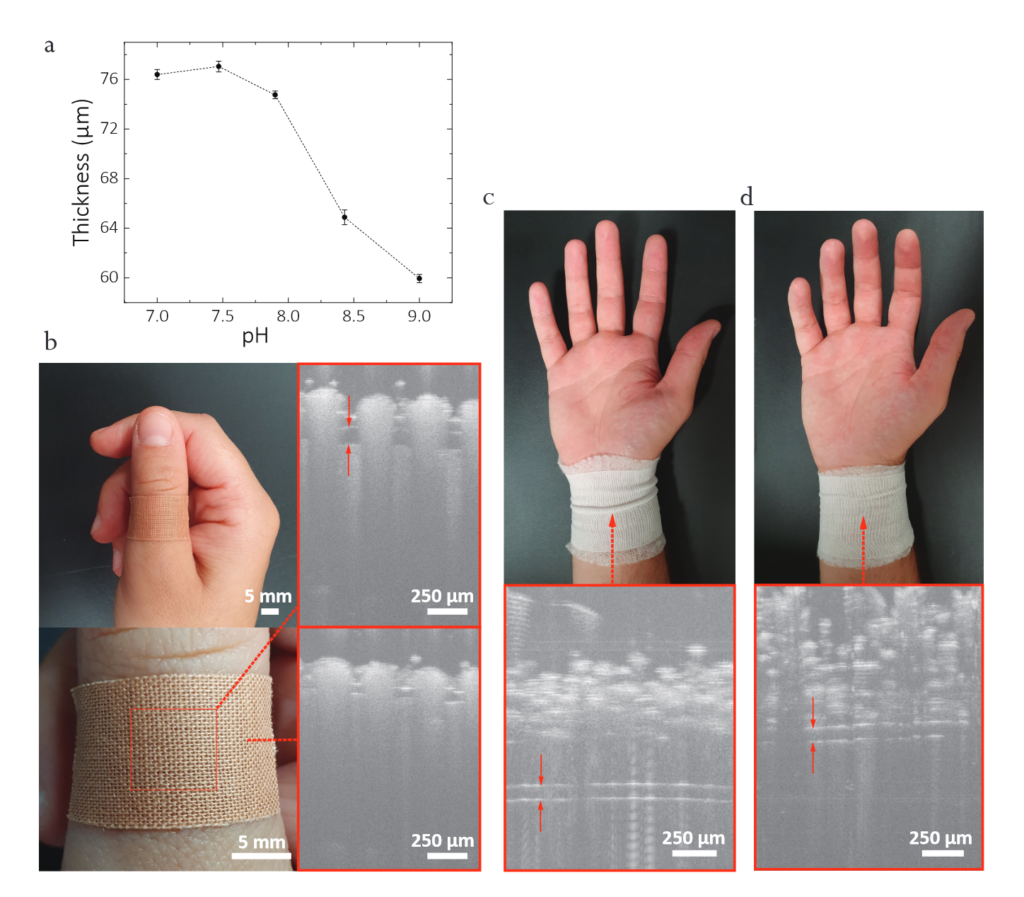Article in Optics Express
Mimoza Naseska, PhD, and Assist. Prof. Matjaž Humar, PhD, from the Department of Solid State Physics F5, in collaboration with colleagues from CENN Nanocenter, Imperial College London, and the Faculty of Mathematics and Physics, University of Ljubljana, have published an article titled Non-contact Monitoring of Glucose Concentration and pH by Integration of Wearable and Implantable Hydrogel Sensors with Optical Coherence Tomography in the journal Optics Express.
Optical coherence tomography (OCT) is a noninvasive imaging technique with large penetration depth into the tissue, but limited chemical specificity. By incorporating functional co-monomers, hydrogels can be designed to respond to specific molecules and undergo reversible volume changes. In this study, we present implantable and wearable biocompatible hydrogel sensors combined with OCT to monitor their thickness change as a tool for continuous and real-time monitoring of glucose concentration and pH. The results demonstrate the potential of combining hydrogel biosensors with OCT for non-contact continuous in-vivo monitoring of physiological parameters.

Figure: pH-sensitive hydrogel film for wound monitoring. a) The graph shows the deswelling of the film as a response to increasing pH of the solution. b) OCT B-scan of the hydrogel film located below a finger patch (upper right) and of the surrounding area with no hydrogel film (lower right). The arrows on the top right image indicate the location of the hydrogel film. The upper left image shows the location of the patch and the rectangle on the lower left image indicates the location of the hydrogel film. c) OCT B-scan of the pH sensitive film located below one layer of gauze and one layer of bandage, shown on the photo. The arrows indicate the location of the hydrogel film which is clearly visible on the OCT scan. d) OCT B-scan of the pH sensitive film located below two layers of gauze and one layer of bandage. The arrows indicate the location of the hydrogel film. The increasing number of covering layers reduces the visibility of the hydrogel under OCT.
